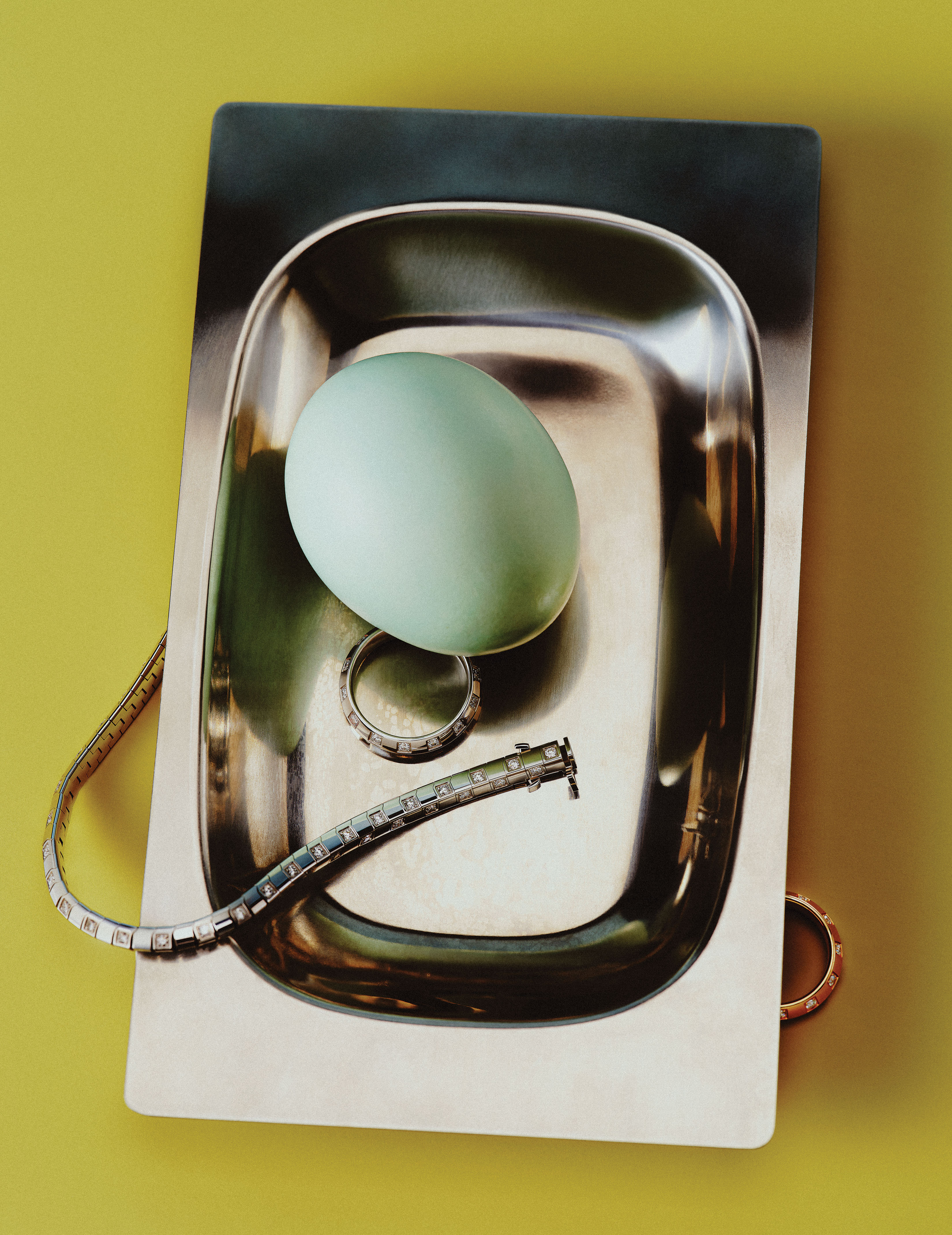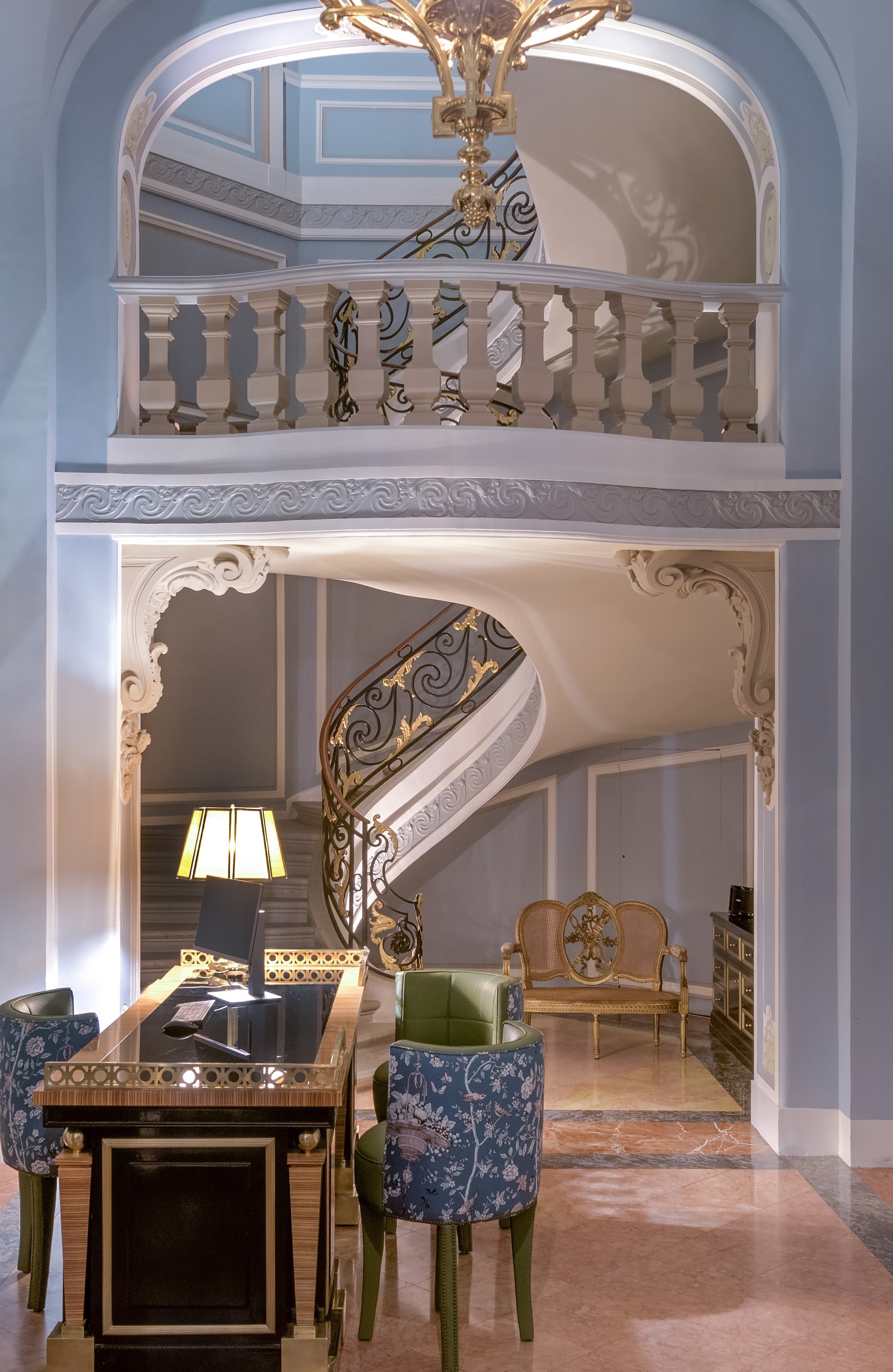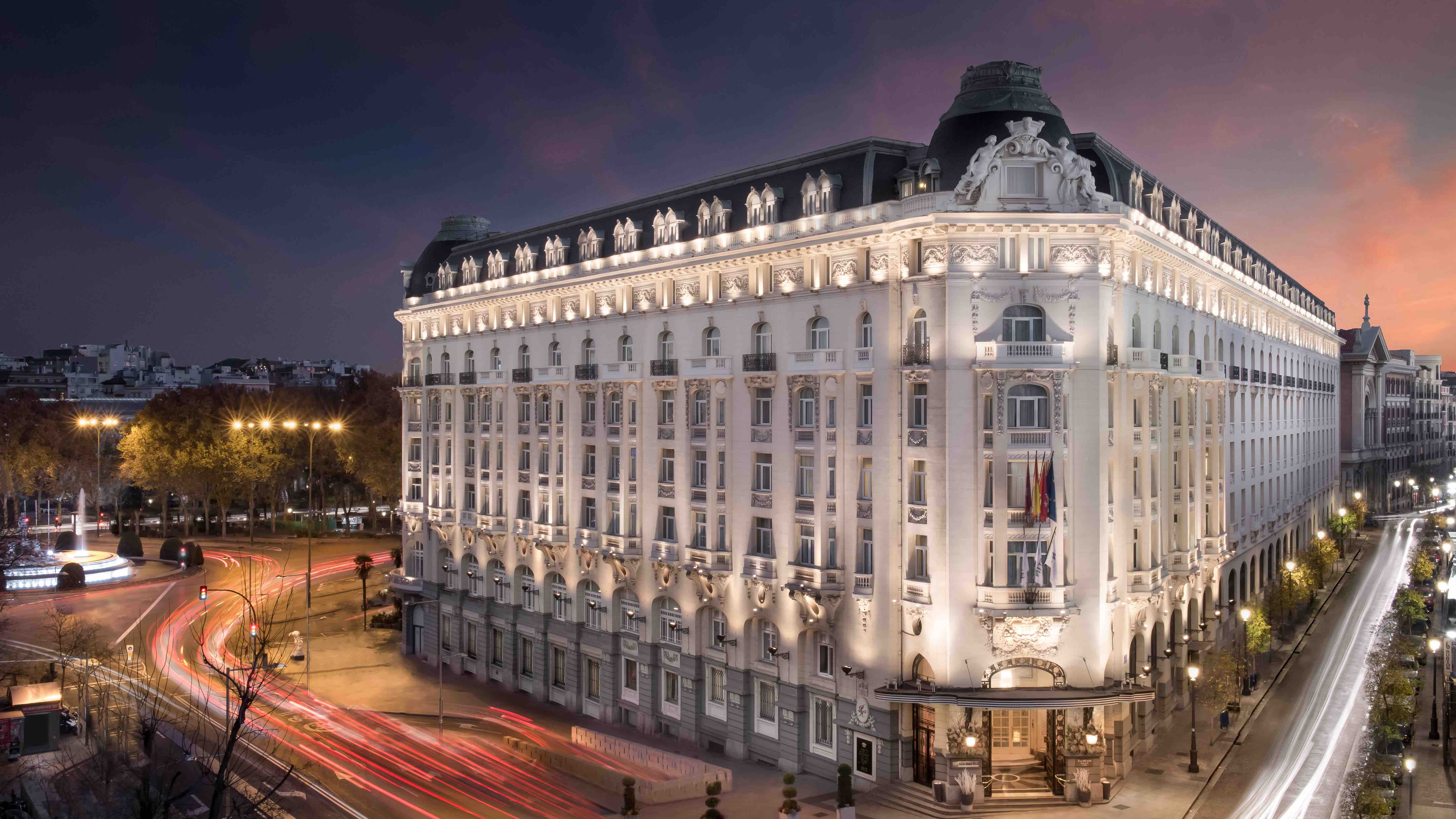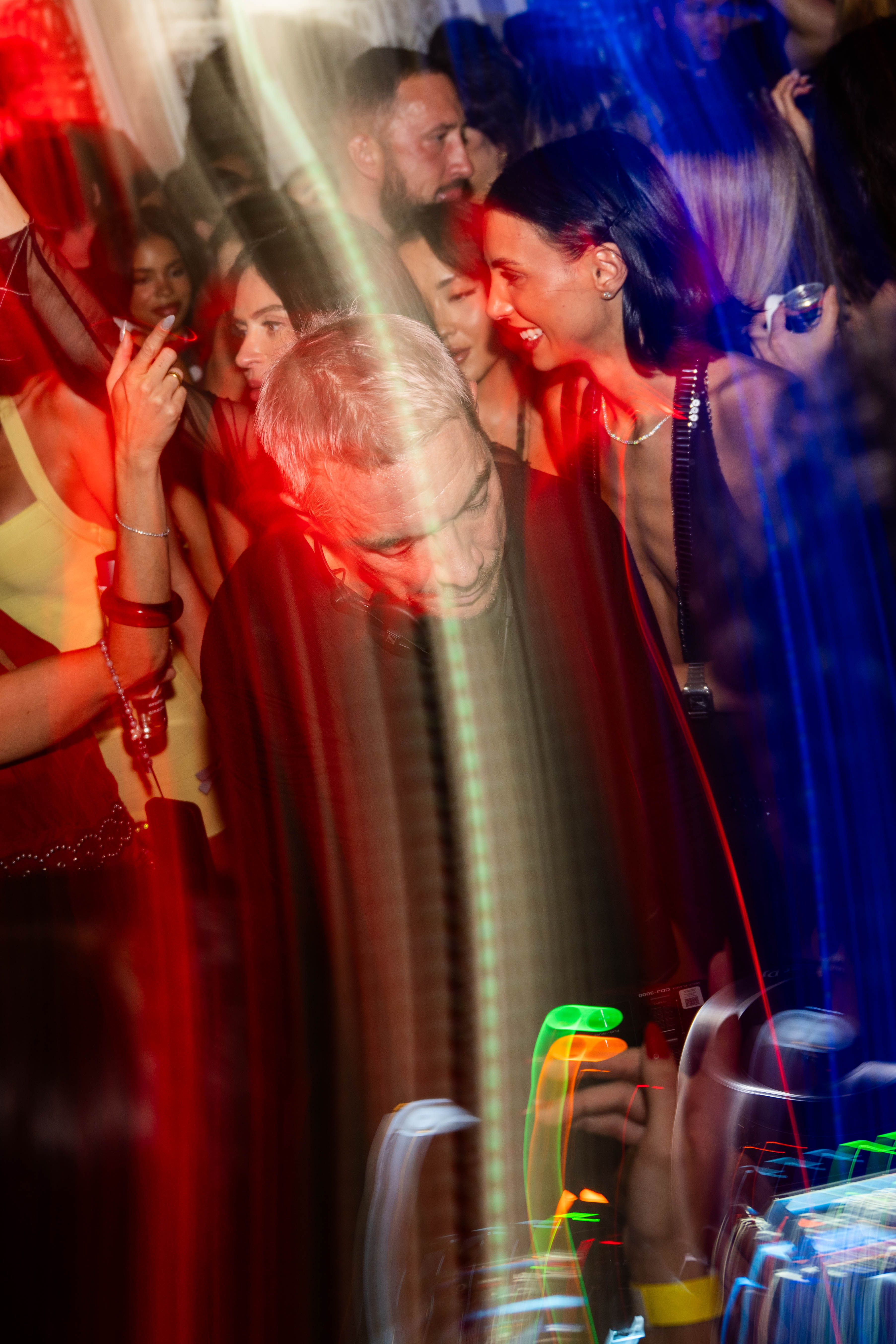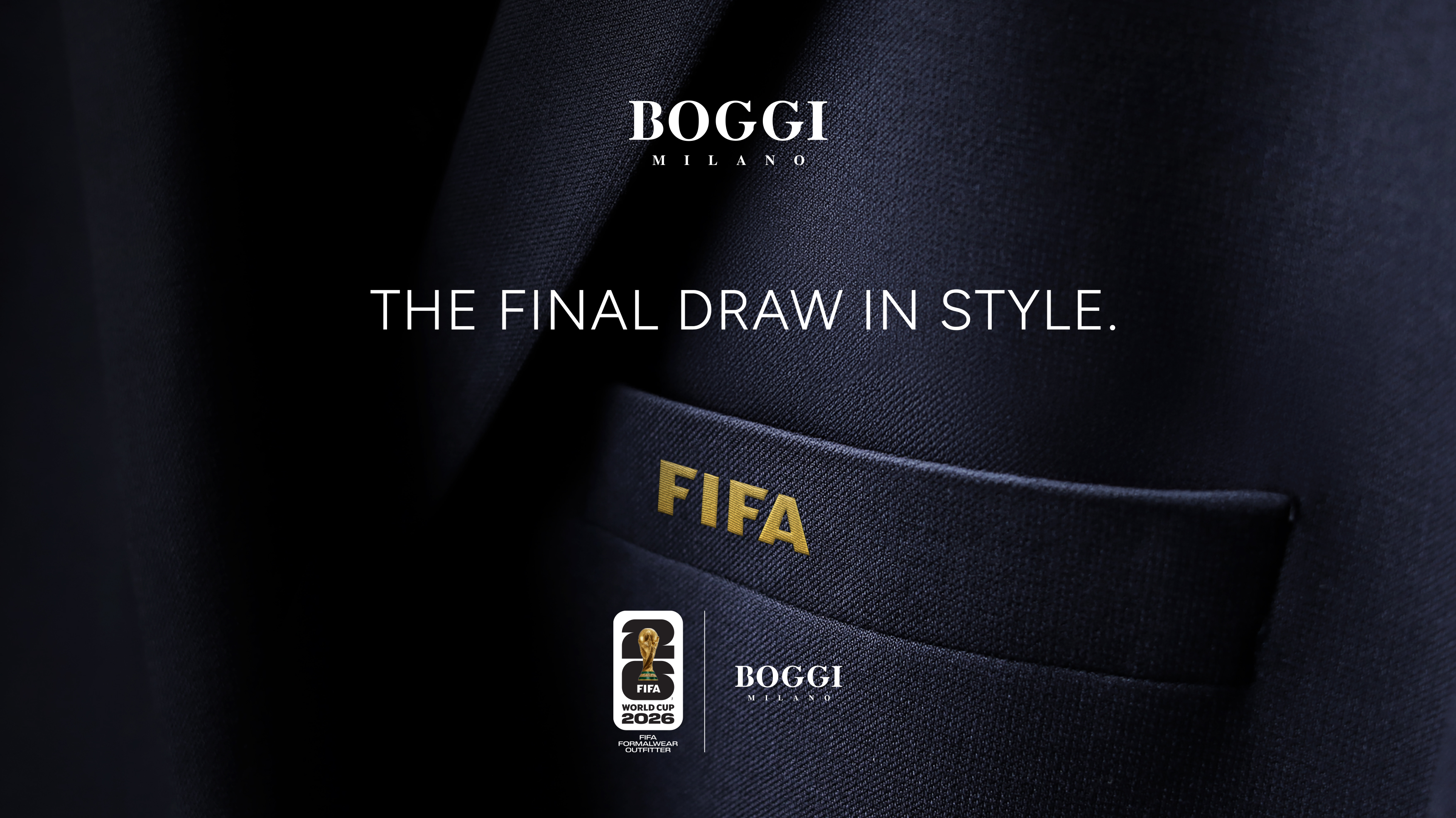The rack of fried pork skins was too tall for the museum walls. Now it lines the studio of its creator, Lucia Hierro, who looms above her desk like a loyal knight. Throughout my two-hour conversation with Hierro, I feel hypnotized by the pork skins that hang behind her, the chicharrones staring back at me as if they know I am a stranger to their taste. As I gaze up towards their grandiosity—an otherwise banal object on an absurd scale—Hierro offers me a glass of expensive rum, and, deciding to indulge, I accept. “A performance artist came into my studio and told me they are very tributary and alter-ish,” she says, as I nod and look up to the pork skins. She explains that it took her a while to digest the implication of spirituality. We realize her initial reaction is perhaps a product of being born and raised
in New York City: “There is a real aversion to anything spiritual. The idea of telling somebody that you need to heal implies a wound,” she pauses, “and New Yorkers don’t like admitting to weakness.” Hierro and I were both born and raised in New York City, a connection that is visceral and curious. There
are some shared qualities of our NYC childhoods. I, too, share a discomfort with the spiritual, perhaps because the presumption baked into all children of the five boroughs is that Capital is our God. Learned street smarts were
a must. So, too, was the unwavering love of the subway. Both of us developed a deep appreciation for empathic body language (we are in agreement that New Yorkers have posturing down). But in other senses, we might as well have grown up on the other side of the planet.
Hierro is Dominican-American; her
sculptures an ode
to the specificity
of growing up in
Washington Heights,
a predominantly
Dominican
neighborhood that
sits above West Harlem, sandwiched between the Harlem and Hudson rivers. The details of Latinx culture sing in Hierro’s art. An unabashed analysis of personal narratives blow up: “My family talked about everything around the dinner table, included us
as if we were adults. I learned that if you are in my space, in my house, it’s going to be all personal.” Her first solo show, _Mercado_ (2018), at Elizabeth Dee Gallery, presented a series of large-scale semi-translucent bags; assemblages made up of groceries, lotto tickets, coupons, and other objects culturally familiar to a Latinx eye. “The more specific I got, the broader the conversation could get surrounding the work and content,” Hierro explains. “It is the illusion of knowing everything about the maker and the content, when really there are hidden landmines. You cannot copy this work, but it’s easy to think that you can.”


Lucia Hierro. “Mandao 1” (2019). PolyOrganza, Felt, Digital Print on Suede, Foam. Dimensions 52 x 38 x 6 in. Courtesy the artist. Photo: Freddie L. Rankin II
There is refined quality to her artwork, much like Hierro’s character, a quiet sort of clarity, that feels intended to challenge rather than comfort. “They are questions posited. Constructed spaces made to spark a specific conversation... Yes, it can be simplified. I am monumentalizing the Dominican culture, there’s that side of course,” she says sincerely, “but I consider my work to be a little bit morbid and sinister.” “And something tragically comedic,” I add, after looking up at the giant Mercado bag full of nothing hanging from the wall. There’s a pause. “Like laughing at a funeral,” she replies.
Hierro’s sculptural objects vibrate on some mystifying level, like they have a life of their own. Vibrating matter is not a foreign concept to her. She always appreciated the likes of Jim Henson and Frank Oz, people who could bring life into anything, no matter how banal. As a child, Hierro spent a lot of time in her dad’s music studio. They would joke about the personality of the instruments, how the whiny sound of a trombone reminded her father of the man who played it. For Hierro, the ways in which we connect to objects—the feelings and reactions they bring—can often shape the character of the object itself. It is a post-structural questioning of objectivity, where, throughout time, individuals are intimately tied to the objects with which they surround themselves. Simple daily things are essentialized into a history of thoughts and feelings,
of subjective associations. “Engineers are always thinking how people relate to objects. Everything is related to the body. We need to hear a click to know that something ends and starts. There’s reassurance in that click. That’s the
way I put together images.” Perhaps that is why the oversized products feel so eerie. I am gazing at an identity of a culture through the lens of their consumption.
Her work could be described as phenomenological—an ironic analysis of the ways in which the physicality of capitalism orients the mentality of culture. Ironic, in the sense that the analysis debunks both the pleasures and poisons of Latinx consumption. For Hierro, the symbols are literal. After all,
she codes her art in Latinx vernacular. Moving back and forth between Spanish and English, Hierro learned young the complexity of language as an ever-evolving quilt of nuance, constantly amended and affixed. “The work is lexical,” Hierro proclaims, “I understood that a new way of speaking, whether it is Spanglish or Ebonics, was an act of resistance, a conjuring up of different things...Everybody has different definitions of Latinx. I love how it is this thing that refuses to be labeled.”
Though language has remained a constant interest of hers, both in theory and practice, her focus was not always sculpture.
As an undergrad at SUNY Purchase, she was a painter. “I was trying to borrow the language of white male artists, like Matisse, to make commentary on art history and a culturally-specific narrative, but they weren’t being read that way. They were being read as folky painting.” Once she got to Yale for her MFA, her work shifted from painting to objects. I can hear in her voice
the frustration with the unjust forces at play in the art world, describing a formative moment when she noted the biting differences while visiting the back-to-back exhibitions of two contemporaries, Robert Rauschenberg and Charles White: “White’s was framed as black history, everything was dimmed, his art some ancient relic, art from the past...whereas Rauschenberg’s was white and slate-clean, pushing a present relevance.” _Historical_ here was not a compliment. Instead, it was an access-point through which a white audience could feel that such black excellence was at bay, something of the past, no longer present. “There is something to be said about an art world that believes they invented everything,” with an edge in her voice, “where history exists in oblivion.”
The question we ruminate on is a difficult one: how does one subvert an art scene that has
a particular talent
for codifying acts of resistance? “Everyday I walk into this studio, I remind myself that art dealers and gallerists fight for breadcrumbs. And I’m over here with the loaf,” she says, emphatically. Making the work accessible and simultaneously hard to dissect is a tenuous balance,
and failure means
conflating political
identities into bite-
size consumable
moments. Though
Hierro believes that
one can translate art
into the Instagrammable realm and still retain its meaning, “You _can_ do both. It’s more important than ever under the current political circumstances, that we uphold intellect.”
The responsibility is as much on the framing of the art
as the art itself. There needs to be a relentless criticality, a dialectical form through which the tension of opposing ideas creates something new. We both agree that such niceties and a fear of argumentative confrontation develop into an indulgent and comforting relationship to culture, where art devolves
solely into entertainment. “We have a way of turning new ideas into something familiar very quickly,” she retorted, “that is part of my tactic: of using familiar images and turning them and making them unfamiliar. There’s an access point, but then it gets twisted around.”


Lucia Hierro. “Torrejitas de Yuca” (2019). Digital Print on Brush Suede, Cotton, Fleece, Foam. Dimensions 22 x 22 x 2 in. Courtesy the artist. Photo: Freddie L. Rankin II
Hierro’s still life series, _Bodegones_, exemplifies such a delicacy. _Bodegones_ literally means “still-life” in Spanish, but finds its nuanced definition in the action of people bringing food home from the bodegas and arranging it to their liking. Vibrant, the series is easy on the eyes yet tragic in its form, daily objects composed in such a human way, exuding a sense of being both lost and yet perfectly found. “It’s hard. People want the easy headlines like, “ARTIST MAKES WORK ABOUT BODEGAS.”
I reassure her that I’m not going to regurgitate her simple statement, nor would I make ‘hip’ our time spent. She laughs and says she’s relieved. “As an artist, I make the choice to step back and look at things. I don’t know the rights or wrongs and I am not going to make those assumptions. I tend to observe. That’s where the work comes.”
For Hierro, the summer of 2019 will be fruitful. Not only is she currently in _Coffee, Rhum, Sugar & Gold: A Colonial Paradox_ at MoAD in San Francisco until August, later in June, her work will be shown in _PUNCH_, an exhibition at Jeffrey Deitch in Hollywood. Curated by Nina Chanel Abney, _PUNCH_ is an expansion of the exhibition presented at Deitch’s New
York gallery last fall. The L.A. twist will explore contemporary figuration and feature art from her fellow peers at Yale. “We were around each other in grad school and not realizing that our works were connected in some strange way, beyond the fact that we
were making art in this time and place, something about the human condition.” Her participation in the show is excitedly experimental, seeing as she does not define her work as figurative. “To think of food and consumption
in a figurative way is interesting. The figure is being implied, where the audience becomes the figure,” —successfully so.
I tell her that her work has a quality
of performativity
by reaching out
and shimmying the shoulders of the audience a bit, rejoicing in the nakedness of nuance without explaining it. What a relief from the virtual world, where the obscurity oftentimes forgets the physical.
By this point, my body has fully absorbed the rum that Hierro nervously offered, and I had nervously accepted. Flavor held
court in the liquor, which we drank neat. The rum was a good
idea. It was calming to our anxieties: her fear that words would be maimed and my resisting the image of an individual capable of such misinterpretation. By the end, we were tangibly comfortable conversing with one another. We listened intently, drifting off when necessary to find our own anchors, relieved that we could agree that a profile is incapable of expressing the totality of an artist. Perhaps, such an expression cannot exist. We are fragments of a whole truth seemingly inaccessible. Art grasps at the ends of our scattered strands: a brave attempt to realize a part of our truths.
* * *
[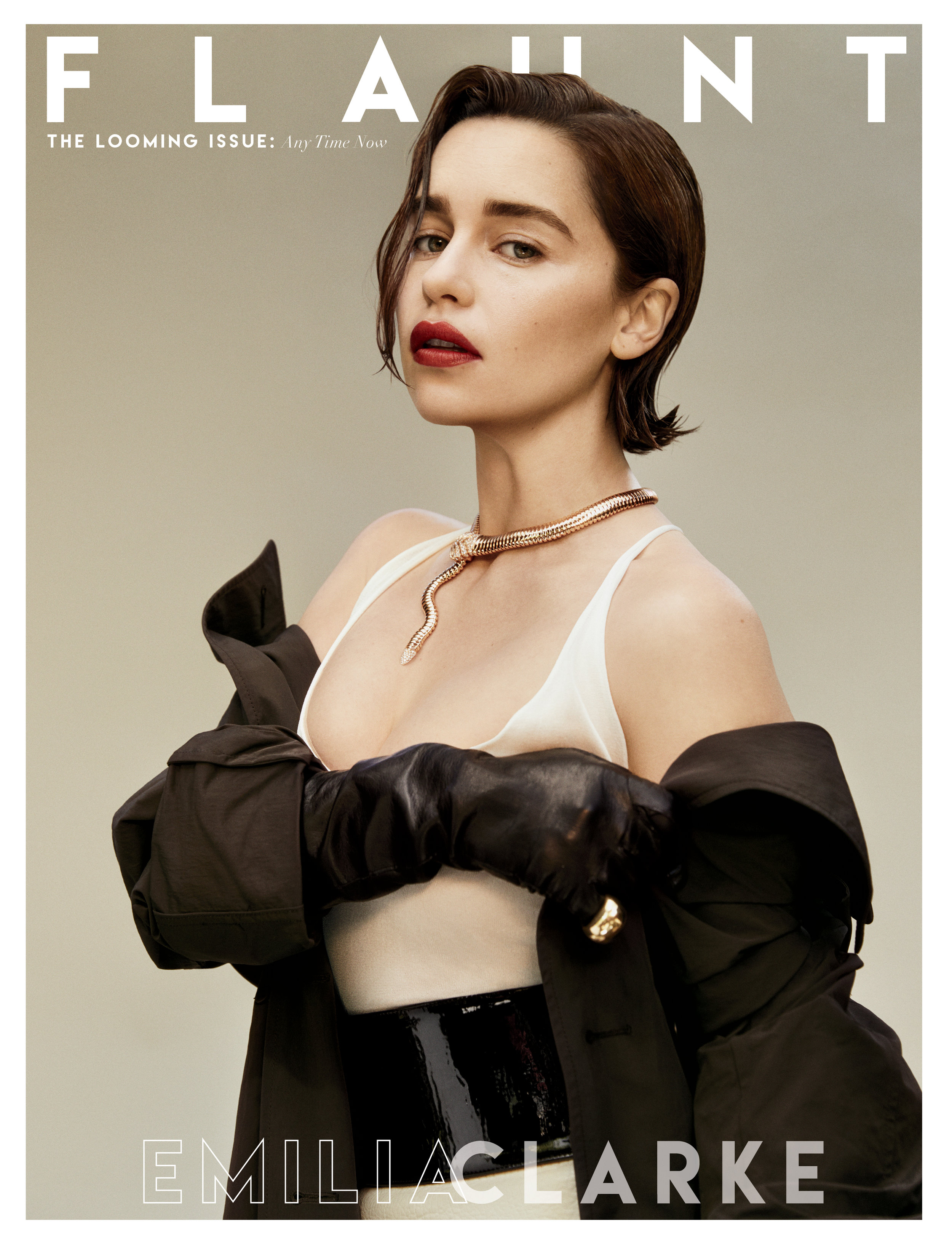
sold out
](/store/issue-166)
[Issue 166](/store/issue-166)
$15.95
Outside Cover:
Select Outside Cover TYGACALEB LANDRY JONESFLORIAN MAIER-AICHEN EMILIA CLARKE
TYGA CALEB LANDRY JONES FLORIAN MAIER-AICHEN EMILIA CLARKE
Add To Cart
document.querySelector('.product-block .product-block').classList.add('is-first-product-block');
 
Lucia Hierro. “Mandao 1” (2019). PolyOrganza, Felt, Digital Print on Suede, Foam. Dimensions 52 x 38 x 6 in. Courtesy the artist. Photo: Freddie L. Rankin II
There is refined quality to her artwork, much like Hierro’s character, a quiet sort of clarity, that feels intended to challenge rather than comfort. “They are questions posited. Constructed spaces made to spark a specific conversation... Yes, it can be simplified. I am monumentalizing the Dominican culture, there’s that side of course,” she says sincerely, “but I consider my work to be a little bit morbid and sinister.” “And something tragically comedic,” I add, after looking up at the giant Mercado bag full of nothing hanging from the wall. There’s a pause. “Like laughing at a funeral,” she replies.
Hierro’s sculptural objects vibrate on some mystifying level, like they have a life of their own. Vibrating matter is not a foreign concept to her. She always appreciated the likes of Jim Henson and Frank Oz, people who could bring life into anything, no matter how banal. As a child, Hierro spent a lot of time in her dad’s music studio. They would joke about the personality of the instruments, how the whiny sound of a trombone reminded her father of the man who played it. For Hierro, the ways in which we connect to objects—the feelings and reactions they bring—can often shape the character of the object itself. It is a post-structural questioning of objectivity, where, throughout time, individuals are intimately tied to the objects with which they surround themselves. Simple daily things are essentialized into a history of thoughts and feelings,
of subjective associations. “Engineers are always thinking how people relate to objects. Everything is related to the body. We need to hear a click to know that something ends and starts. There’s reassurance in that click. That’s the
way I put together images.” Perhaps that is why the oversized products feel so eerie. I am gazing at an identity of a culture through the lens of their consumption.
Her work could be described as phenomenological—an ironic analysis of the ways in which the physicality of capitalism orients the mentality of culture. Ironic, in the sense that the analysis debunks both the pleasures and poisons of Latinx consumption. For Hierro, the symbols are literal. After all,
she codes her art in Latinx vernacular. Moving back and forth between Spanish and English, Hierro learned young the complexity of language as an ever-evolving quilt of nuance, constantly amended and affixed. “The work is lexical,” Hierro proclaims, “I understood that a new way of speaking, whether it is Spanglish or Ebonics, was an act of resistance, a conjuring up of different things...Everybody has different definitions of Latinx. I love how it is this thing that refuses to be labeled.”
Though language has remained a constant interest of hers, both in theory and practice, her focus was not always sculpture.
As an undergrad at SUNY Purchase, she was a painter. “I was trying to borrow the language of white male artists, like Matisse, to make commentary on art history and a culturally-specific narrative, but they weren’t being read that way. They were being read as folky painting.” Once she got to Yale for her MFA, her work shifted from painting to objects. I can hear in her voice
the frustration with the unjust forces at play in the art world, describing a formative moment when she noted the biting differences while visiting the back-to-back exhibitions of two contemporaries, Robert Rauschenberg and Charles White: “White’s was framed as black history, everything was dimmed, his art some ancient relic, art from the past...whereas Rauschenberg’s was white and slate-clean, pushing a present relevance.” _Historical_ here was not a compliment. Instead, it was an access-point through which a white audience could feel that such black excellence was at bay, something of the past, no longer present. “There is something to be said about an art world that believes they invented everything,” with an edge in her voice, “where history exists in oblivion.”
The question we ruminate on is a difficult one: how does one subvert an art scene that has
a particular talent
for codifying acts of resistance? “Everyday I walk into this studio, I remind myself that art dealers and gallerists fight for breadcrumbs. And I’m over here with the loaf,” she says, emphatically. Making the work accessible and simultaneously hard to dissect is a tenuous balance,
and failure means
conflating political
identities into bite-
size consumable
moments. Though
Hierro believes that
one can translate art
into the Instagrammable realm and still retain its meaning, “You _can_ do both. It’s more important than ever under the current political circumstances, that we uphold intellect.”
The responsibility is as much on the framing of the art
as the art itself. There needs to be a relentless criticality, a dialectical form through which the tension of opposing ideas creates something new. We both agree that such niceties and a fear of argumentative confrontation develop into an indulgent and comforting relationship to culture, where art devolves
solely into entertainment. “We have a way of turning new ideas into something familiar very quickly,” she retorted, “that is part of my tactic: of using familiar images and turning them and making them unfamiliar. There’s an access point, but then it gets twisted around.”

Lucia Hierro. “Mandao 1” (2019). PolyOrganza, Felt, Digital Print on Suede, Foam. Dimensions 52 x 38 x 6 in. Courtesy the artist. Photo: Freddie L. Rankin II
There is refined quality to her artwork, much like Hierro’s character, a quiet sort of clarity, that feels intended to challenge rather than comfort. “They are questions posited. Constructed spaces made to spark a specific conversation... Yes, it can be simplified. I am monumentalizing the Dominican culture, there’s that side of course,” she says sincerely, “but I consider my work to be a little bit morbid and sinister.” “And something tragically comedic,” I add, after looking up at the giant Mercado bag full of nothing hanging from the wall. There’s a pause. “Like laughing at a funeral,” she replies.
Hierro’s sculptural objects vibrate on some mystifying level, like they have a life of their own. Vibrating matter is not a foreign concept to her. She always appreciated the likes of Jim Henson and Frank Oz, people who could bring life into anything, no matter how banal. As a child, Hierro spent a lot of time in her dad’s music studio. They would joke about the personality of the instruments, how the whiny sound of a trombone reminded her father of the man who played it. For Hierro, the ways in which we connect to objects—the feelings and reactions they bring—can often shape the character of the object itself. It is a post-structural questioning of objectivity, where, throughout time, individuals are intimately tied to the objects with which they surround themselves. Simple daily things are essentialized into a history of thoughts and feelings,
of subjective associations. “Engineers are always thinking how people relate to objects. Everything is related to the body. We need to hear a click to know that something ends and starts. There’s reassurance in that click. That’s the
way I put together images.” Perhaps that is why the oversized products feel so eerie. I am gazing at an identity of a culture through the lens of their consumption.
Her work could be described as phenomenological—an ironic analysis of the ways in which the physicality of capitalism orients the mentality of culture. Ironic, in the sense that the analysis debunks both the pleasures and poisons of Latinx consumption. For Hierro, the symbols are literal. After all,
she codes her art in Latinx vernacular. Moving back and forth between Spanish and English, Hierro learned young the complexity of language as an ever-evolving quilt of nuance, constantly amended and affixed. “The work is lexical,” Hierro proclaims, “I understood that a new way of speaking, whether it is Spanglish or Ebonics, was an act of resistance, a conjuring up of different things...Everybody has different definitions of Latinx. I love how it is this thing that refuses to be labeled.”
Though language has remained a constant interest of hers, both in theory and practice, her focus was not always sculpture.
As an undergrad at SUNY Purchase, she was a painter. “I was trying to borrow the language of white male artists, like Matisse, to make commentary on art history and a culturally-specific narrative, but they weren’t being read that way. They were being read as folky painting.” Once she got to Yale for her MFA, her work shifted from painting to objects. I can hear in her voice
the frustration with the unjust forces at play in the art world, describing a formative moment when she noted the biting differences while visiting the back-to-back exhibitions of two contemporaries, Robert Rauschenberg and Charles White: “White’s was framed as black history, everything was dimmed, his art some ancient relic, art from the past...whereas Rauschenberg’s was white and slate-clean, pushing a present relevance.” _Historical_ here was not a compliment. Instead, it was an access-point through which a white audience could feel that such black excellence was at bay, something of the past, no longer present. “There is something to be said about an art world that believes they invented everything,” with an edge in her voice, “where history exists in oblivion.”
The question we ruminate on is a difficult one: how does one subvert an art scene that has
a particular talent
for codifying acts of resistance? “Everyday I walk into this studio, I remind myself that art dealers and gallerists fight for breadcrumbs. And I’m over here with the loaf,” she says, emphatically. Making the work accessible and simultaneously hard to dissect is a tenuous balance,
and failure means
conflating political
identities into bite-
size consumable
moments. Though
Hierro believes that
one can translate art
into the Instagrammable realm and still retain its meaning, “You _can_ do both. It’s more important than ever under the current political circumstances, that we uphold intellect.”
The responsibility is as much on the framing of the art
as the art itself. There needs to be a relentless criticality, a dialectical form through which the tension of opposing ideas creates something new. We both agree that such niceties and a fear of argumentative confrontation develop into an indulgent and comforting relationship to culture, where art devolves
solely into entertainment. “We have a way of turning new ideas into something familiar very quickly,” she retorted, “that is part of my tactic: of using familiar images and turning them and making them unfamiliar. There’s an access point, but then it gets twisted around.”
 
Lucia Hierro. “Torrejitas de Yuca” (2019). Digital Print on Brush Suede, Cotton, Fleece, Foam. Dimensions 22 x 22 x 2 in. Courtesy the artist. Photo: Freddie L. Rankin II
Hierro’s still life series, _Bodegones_, exemplifies such a delicacy. _Bodegones_ literally means “still-life” in Spanish, but finds its nuanced definition in the action of people bringing food home from the bodegas and arranging it to their liking. Vibrant, the series is easy on the eyes yet tragic in its form, daily objects composed in such a human way, exuding a sense of being both lost and yet perfectly found. “It’s hard. People want the easy headlines like, “ARTIST MAKES WORK ABOUT BODEGAS.”
I reassure her that I’m not going to regurgitate her simple statement, nor would I make ‘hip’ our time spent. She laughs and says she’s relieved. “As an artist, I make the choice to step back and look at things. I don’t know the rights or wrongs and I am not going to make those assumptions. I tend to observe. That’s where the work comes.”
For Hierro, the summer of 2019 will be fruitful. Not only is she currently in _Coffee, Rhum, Sugar & Gold: A Colonial Paradox_ at MoAD in San Francisco until August, later in June, her work will be shown in _PUNCH_, an exhibition at Jeffrey Deitch in Hollywood. Curated by Nina Chanel Abney, _PUNCH_ is an expansion of the exhibition presented at Deitch’s New
York gallery last fall. The L.A. twist will explore contemporary figuration and feature art from her fellow peers at Yale. “We were around each other in grad school and not realizing that our works were connected in some strange way, beyond the fact that we
were making art in this time and place, something about the human condition.” Her participation in the show is excitedly experimental, seeing as she does not define her work as figurative. “To think of food and consumption
in a figurative way is interesting. The figure is being implied, where the audience becomes the figure,” —successfully so.
I tell her that her work has a quality
of performativity
by reaching out
and shimmying the shoulders of the audience a bit, rejoicing in the nakedness of nuance without explaining it. What a relief from the virtual world, where the obscurity oftentimes forgets the physical.
By this point, my body has fully absorbed the rum that Hierro nervously offered, and I had nervously accepted. Flavor held
court in the liquor, which we drank neat. The rum was a good
idea. It was calming to our anxieties: her fear that words would be maimed and my resisting the image of an individual capable of such misinterpretation. By the end, we were tangibly comfortable conversing with one another. We listened intently, drifting off when necessary to find our own anchors, relieved that we could agree that a profile is incapable of expressing the totality of an artist. Perhaps, such an expression cannot exist. We are fragments of a whole truth seemingly inaccessible. Art grasps at the ends of our scattered strands: a brave attempt to realize a part of our truths.
* * *
[
sold out
](/store/issue-166)
[Issue 166](/store/issue-166)
$15.95
Outside Cover:
Select Outside Cover TYGACALEB LANDRY JONESFLORIAN MAIER-AICHEN EMILIA CLARKE
TYGA CALEB LANDRY JONES FLORIAN MAIER-AICHEN EMILIA CLARKE
Add To Cart
document.querySelector('.product-block .product-block').classList.add('is-first-product-block');

Lucia Hierro. “Torrejitas de Yuca” (2019). Digital Print on Brush Suede, Cotton, Fleece, Foam. Dimensions 22 x 22 x 2 in. Courtesy the artist. Photo: Freddie L. Rankin II
Hierro’s still life series, _Bodegones_, exemplifies such a delicacy. _Bodegones_ literally means “still-life” in Spanish, but finds its nuanced definition in the action of people bringing food home from the bodegas and arranging it to their liking. Vibrant, the series is easy on the eyes yet tragic in its form, daily objects composed in such a human way, exuding a sense of being both lost and yet perfectly found. “It’s hard. People want the easy headlines like, “ARTIST MAKES WORK ABOUT BODEGAS.”
I reassure her that I’m not going to regurgitate her simple statement, nor would I make ‘hip’ our time spent. She laughs and says she’s relieved. “As an artist, I make the choice to step back and look at things. I don’t know the rights or wrongs and I am not going to make those assumptions. I tend to observe. That’s where the work comes.”
For Hierro, the summer of 2019 will be fruitful. Not only is she currently in _Coffee, Rhum, Sugar & Gold: A Colonial Paradox_ at MoAD in San Francisco until August, later in June, her work will be shown in _PUNCH_, an exhibition at Jeffrey Deitch in Hollywood. Curated by Nina Chanel Abney, _PUNCH_ is an expansion of the exhibition presented at Deitch’s New
York gallery last fall. The L.A. twist will explore contemporary figuration and feature art from her fellow peers at Yale. “We were around each other in grad school and not realizing that our works were connected in some strange way, beyond the fact that we
were making art in this time and place, something about the human condition.” Her participation in the show is excitedly experimental, seeing as she does not define her work as figurative. “To think of food and consumption
in a figurative way is interesting. The figure is being implied, where the audience becomes the figure,” —successfully so.
I tell her that her work has a quality
of performativity
by reaching out
and shimmying the shoulders of the audience a bit, rejoicing in the nakedness of nuance without explaining it. What a relief from the virtual world, where the obscurity oftentimes forgets the physical.
By this point, my body has fully absorbed the rum that Hierro nervously offered, and I had nervously accepted. Flavor held
court in the liquor, which we drank neat. The rum was a good
idea. It was calming to our anxieties: her fear that words would be maimed and my resisting the image of an individual capable of such misinterpretation. By the end, we were tangibly comfortable conversing with one another. We listened intently, drifting off when necessary to find our own anchors, relieved that we could agree that a profile is incapable of expressing the totality of an artist. Perhaps, such an expression cannot exist. We are fragments of a whole truth seemingly inaccessible. Art grasps at the ends of our scattered strands: a brave attempt to realize a part of our truths.
* * *
[
sold out
](/store/issue-166)
[Issue 166](/store/issue-166)
$15.95
Outside Cover:
Select Outside Cover TYGACALEB LANDRY JONESFLORIAN MAIER-AICHEN EMILIA CLARKE
TYGA CALEB LANDRY JONES FLORIAN MAIER-AICHEN EMILIA CLARKE
Add To Cart
document.querySelector('.product-block .product-block').classList.add('is-first-product-block');


